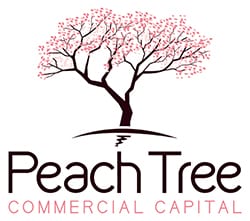There’s no official word on who coined the term, “The bigger they are, the harder they fall,” but it certainly seems to apply to “unicorn” businesses as of late. These privately owned businesses earn the classification “unicorn” when they breach the $1B valuation mark. But many venture-backed enterprises lost upwards of 50% of their value over the past few years, knocking several of them out of “unicorn” status.
While the losses can be a blow to the egos of billionaires, the market shift has caused ripples that stretch beyond the private bank accounts of the uber-rich. Many unicorns have implemented massive layoffs, attempting to delay capital depletion. Shareholders who feel the company is on the downswing will take their money elsewhere. Depending on their personal ties to the company, venture capital investors are beating a hasty exit, albeit at lower values than they had hoped.
Unless you’re a multi-billionaire, you might be asking yourself what this has to do with your business. The short answer is that reliance on inbound equity capital can get you caught in the ripples of unicorn failures. Don’t count on venture capital investors to provide most of your funding, and it is likely that acquisitions will slow down and that exits will be depreciated for the foreseeable future. It’s time to reconfigure and focus on growth from performance and sales. For many businesses, that means placing new emphasis on cash flow.
Cash Flow 101
Show us a business with poor cash flow, and we’ll show you a business in a lot of trouble. One of the most critical functions of your management team is creating cash flow statements that accurately describe inflows and outflows of liquid capital. Some experts advise having six months to a year of cash flow on hand at all times. Without a cash flow assessment, it’s nearly impossible to determine your liquidity, flexibility, and overall financial performance.
For new businesses, it’s perfectly normal to have negative cash flow, but this condition is ultimately unsustainable. It’s also important not to confuse cash flow with profits, which aren’t the same. A business can have negative cash flow over a certain period and still see profits over the course of a year, or visa versa.
Over too long a period, having negative cash flow will sink a business of any size. It’s one of the most common causes of business failure. Without adequate cash flow, your business can’t cover expenses. A cash flow shortfall means you can’t pay staff, manage debt, or handle emergencies. It also means the business will close its doors permanently if it can’t address the problem.
Improving Cash Flow
Now that we’ve addressed the potential consequences of negative cash flow, let’s work on some solutions. Here are a few ways to address the problem:
- Adjust your receivables: Offer incentives for customers to pay early or change due dates.
- Evaluate personnel: Invest in retraining rather than rehiring and eliminate redundancies.
- Reduce outflow: Discover places to cut your expenses, whether that means limiting operating hours, changing suppliers, or downsizing your workspace.
- Work with a broker to find appropriate cash flow financing options.
Cash Flow Financing
If your business is facing cash flow issues, it’s not alone. That’s why there are so many financing options out there. However, these solutions are not one-size-fits-all, which is why it’s a good idea to meet with a broker to get a custom fit. For example, factoring can be a great way to get ahead on expenses, but it doesn’t work for businesses without accounts receivable. If your cash flow woes have affected your credit score, an asset-based line of credit may work best. Here are a few more ideas:
- Business Line of Credit: A line of credit lets you borrow what you want when you want, as long as you don’t exceed your credit limit. Credit limits depend on your credit score (unsecured account) or asset value (secured account). Lines with no balance don’t incur interest charges, which makes them great for emergencies.
- Factoring: Factoring gives you a jump on revenue from invoices, purchase orders, and contracts. Sell these assets to a factor to get immediate cash, then let the factor do the collecting. Factoring fees are typically less than 5%.
- Private Loans: Private loans allow companies to leverage the value of their long-term assets without liquidation. Because the assets provide lender security, lenders can approve private loans faster and for higher amounts than an average traditional bank loan. Private loans are short-term, making them ideal for companies expecting a windfall.
- SBA 7a Loans: SBA loans are for companies that have struggled to obtain financing. The SBA 7a loan can provide working capital, or a combination of real estate and working capital, and requires a lower credit score to qualify than most bank loans.
Outside of working capital options, implementing strategies like refinancing, credit repair, restructuring, and diversifying investments can also positively impact cash flow. Don’t forget to explore these options with your broker.
Keeping an eye on your business’s cash flow is imperative, but negative cash flow doesn’t have to mean your business is doomed. Take action before cash flow becomes a problem to improve your chances of survival. With the strategies above, you can focus on sales and performance to drive your growth. And if you’re looking for help in evaluating which financing strategy would work best to stabilize your cash flow, our team is always here for you.

